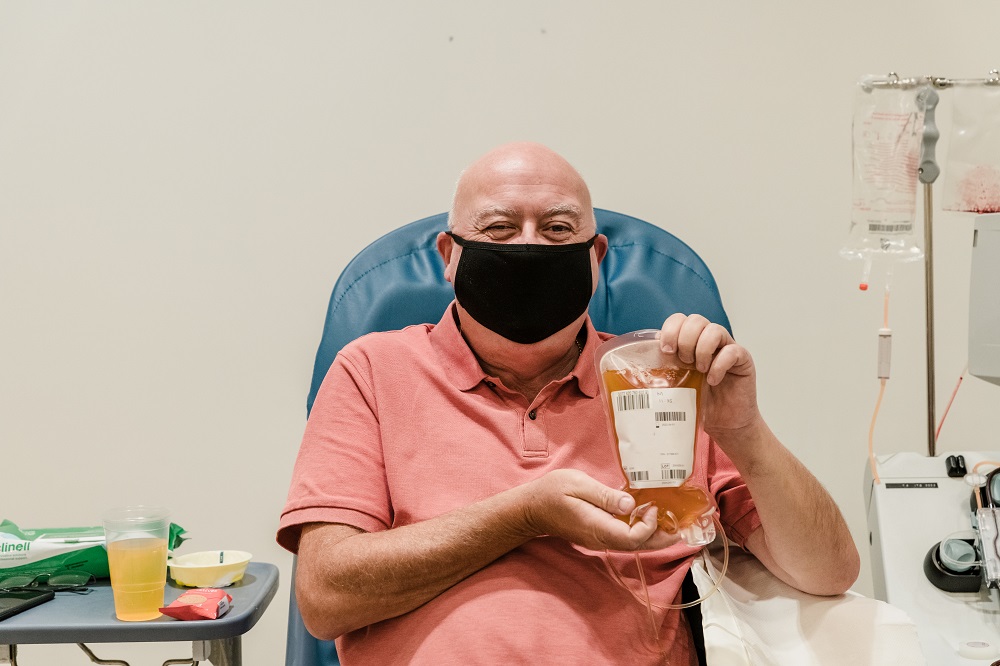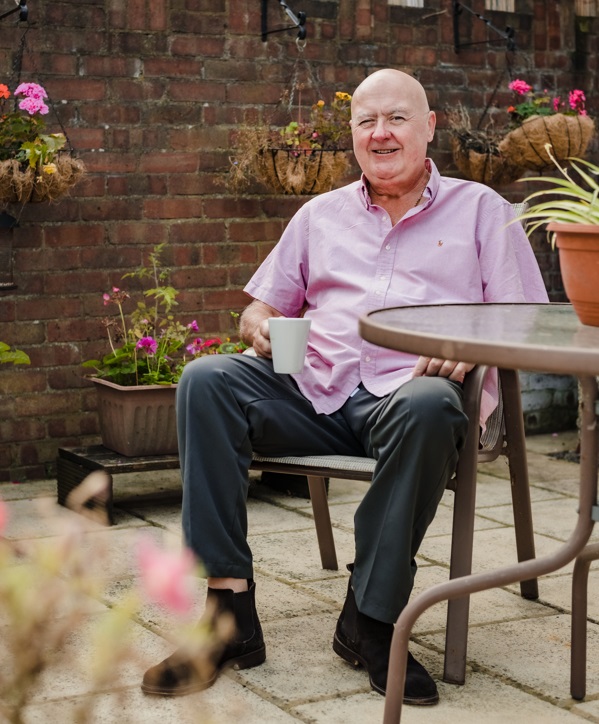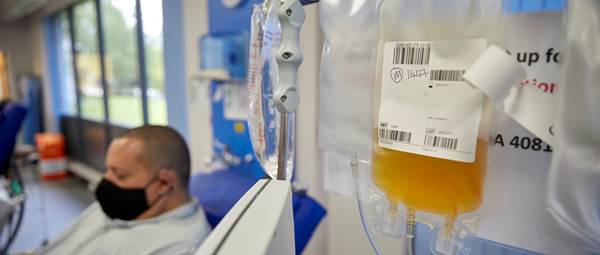First person to donate plasma after receiving plasma for COVID
A COVID survivor has become the first person in England to receive convalescent plasma treatment and then donate convalescent plasma himself.
 John Curtis, a 58-year-old taxi driver from Romford, donated at the Westfield Stratford City shopping centre yesterday (Wednesday, November 4).
John Curtis, a 58-year-old taxi driver from Romford, donated at the Westfield Stratford City shopping centre yesterday (Wednesday, November 4).
He may even pass on antibodies from his own donor, meaning the original transfusion reached two people.
His antibodies could help save the lives of people who still have the illness.
Professor David Roberts, NHSBT Associate Medical Director for Blood Donation, said: “People who’ve had convalescent plasma can donate convalescent plasma like anyone else. (1)
“Their antibody levels may even be slightly higher if the original donor antibodies from their transfusion remain.
“Although the original donor antibodies fall away gradually, some of the original donor antibodies to John will be passed on through the donation.”
He added: “Anyone who was in hospital for COVID is likely to make a great donor, as they have much higher antibody levels. Donation is safe and easy, and you could save lives.” (2)
Why we need male donors
Men who needed hospital treatment for COVID are more than three times more likely to have high enough antibody levels for the trial as men who had the virus but did not need hospital treatment.
John's story
 John received his transfusion during six days of treatment in the Queen’s Hospital in Romford in August. He pledged to donate himself as soon as he was able.
John received his transfusion during six days of treatment in the Queen’s Hospital in Romford in August. He pledged to donate himself as soon as he was able.
He said: “I am surprised to be the first recipient donor albeit I am very happy to be able to take part in such an important program. I think everyone who had COVID should be asked about donating during follow up care.
“I feel convalescent plasma made a significant contribution to my recovery. Every donation could make a difference or even save a life. If I could speak to the person who will receive it, I’d say I hope my plasma helps you recover quickly, and well, from this disease.'”
He added: “The plasma transfusion I had was like a bag of orange fluid, about half a litre. I had one unit a day for two days. I did speculate a bit about who donated but at the end of the day it’s another human being.”
An increasing need for plasma
People can register an offer to donate online. NHS Blood and Transplant is urgently calling for donors – especially men (3) - as new figures show plasma transfusions reached a high during October.
There were around 1,150 convalescent plasma transfusions during October, compared to around 280 in September, and around 50 in August. Around 1,750 people have now received convalescent plasma in total.
Plasma is being used through collaborations with the RECOVERY and REMAP-CAP platform trials. Results may now come before the end of the year.
Donations are taken at NHSBT’s 23 blood donor centres around the country, and at five pop-up plasma donor centres. A further 14 pop-up plasma donor centres are opening in November and December. (4)
If you’ve had confirmed coronavirus or the symptoms, you can volunteer to donate plasma.
Notes
- Normally people who’ve had a transfusion can’t donate as a safety precaution against vCJD but this restriction has been temporarily removed for convalescent plasma only, by The Advisory Committee on the Safety of Blood, Tissues and Organs Safety.
- Donation takes about 45 minutes. The whole visit – including the donation, snacks and checks - takes about 1 hour 15 minutes. Your body usually replaces the plasma you’ve donated in 24-48 hours. Your body also quickly replaces the donated antibodies. All donations are tested for COVID antibodies.
- A man booked in to donate for the first time is three times more likely to give a high antibody unit of plasma than a woman booked in to donate for the first time. This is partly because men are more seriously affected by COVID and produce more antibodies. It is partly because men are more likely to have large enough blood volumes and veins to meet the donation criteria.
- The full list is:
- Blood donor centres which can now take convalescent plasma donations – Birmingham, Bradford, Bristol, Cambridge, Edgware, Gloucester, Lancaster, Leeds City Centre, Leicester, Liverpool, Luton, Manchester Norfolk House, Manchester Plymouth Grove, Newcastle, Nottingham, Oxford, Plymouth, Poole, Sheffield, Southampton, Stoke, Tooting, London West End.
- Convalescent plasma donation pop-up centres opened earlier this year – Liverpool Speke, Leeds Seacroft, Stratford, Bexleyheath, Twickenham.
- Convalescent plasma donation pop-up centres due to open in November and December 2020 – Ashford, Bolton, Chichester, Chelmsford, Coventry, Croydon, Huddersfield, Northampton, Reading, Lincolnshire/Humberside, Stockton on Tees, Tottenham, Woking, Wolverhampton


